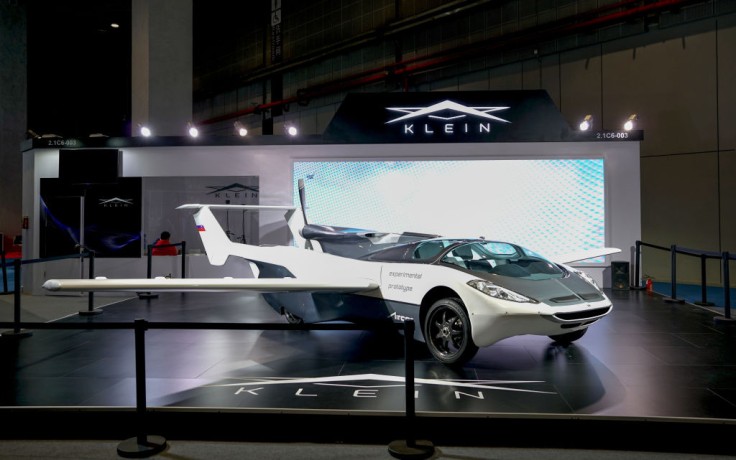
A flying car is now a step closer to mainstream use after a prototype completed a 35-minute flight in Slovakia.
It was certainly a stunning sight to see the aircraft-car hybrid called the AirCar. It flew from Nitra's international airport to a similar global air terminal in Bratislava in southwestern Slovakia, completing its first inter-city test flight on Monday.
AirCar Flies Then Drives to Downtown Bratislava, Slovakia
The takeoff needed two minutes and 15 seconds to have the car transform into an aircraft. And, upon landing, the aircraft turned into a sports car with just a click of a button in under three minutes, AsiaNetNews reported. The AirCar's inventor, Stefan Klein--who was with co-founder Anton Zajac--then drove the vehicle into downtown Bratislava.
Its wings fold down on the sides of the car, a BBC report stated.
In interviews with reporters, Klein said the experience was "normal" and "very pleasant." Klein added the flight was "comfortable" because the "weather was beautiful, everything worked well." After traveling 80 kilometers in 35 minutes, the visionary expounded on the AirCar's main benefit, "You never get stuck in a traffic jam."
AirCar Seen to Start New Age of Transportation
According to a news release from Klein Vision, the company behind the AirCar, it started designing the flying car 32 years ago, leading to Monday's historic milestone, which is seen as the start of the new age of transportation.
Klein is considered a "world leader" in the development of user-friendly flying cars, according to Boeing Senior Technical Fellow Dr. Branko Sarh. He said the automated transition from road vehicle to an aircraft and vice versa--highlighted by deploying and retracting wings and tail--is due to Klein's "excellent engineering and professional knowledge."
AirCar Engine Specs, Other Features
This prototype used in the test flight was equipped with a 160-horsepower BMW engine with a fixed propeller and a ballistic parachute. It has completed 40 hours of test flights, which includes sharp 45 degree turns and testing for stability and maneuverability.
On Monday's flight, the AirCar prototype flew at altitude of 8,200 feet with a cruising speed of 190 kilometers per hour. The AirCar can carry two passengers with a combined weight limit of 200 kilograms.
However, unlike the drone-taxi prototypes in previous reports, the AirCar could not vertically take-off and land, thus requiring an open runway, the BBC noted.
Huge Market Seen for Flying Cars
The BBC report also mentioned that a sector for such aircraft-car hybrids could be worth $1 trillion in 2040, citing a Morgan Stanley forecast. Such flying capabilities are considered helpful solutions to worsening land traffic in urban areas.
AirCar's next prototype, the AirCar-2, is set to be equipped with a 300HP engine while getting the European Aviation Safety Agency (EASA) CS-23 certification specification for normal, utility, aerobatic, and commuter category aeroplanes, with an M1 road permit, the Klein Vision release further said. With a variable pitch propeller, the Prototype-2 is likely to cruise at a speed of 300 km/h at a range of 1000 kms.
Klein Vision said the prototype was developed in two years at a cost of around two million euros ($2.38 million).









